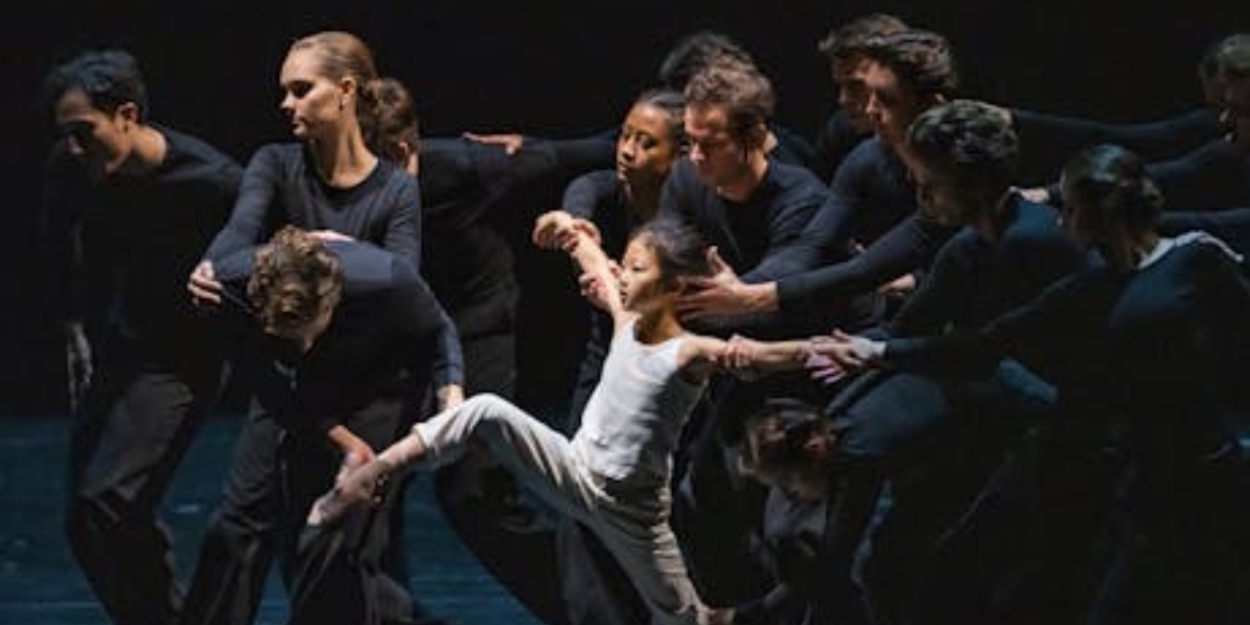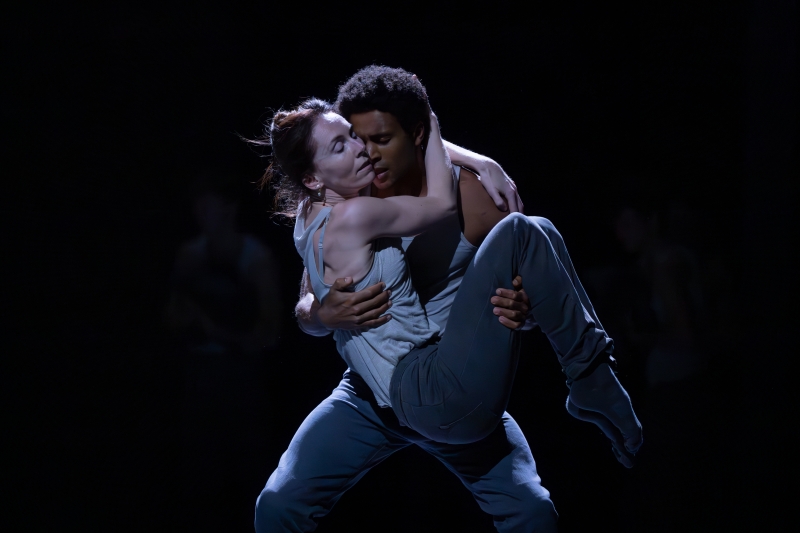Review: LIGHT OF PASSAGE, Royal Ballet And Opera
Crystal Pite's choreography tackles themes of safe passage and the human condition.

![]() Crystal Pite's Light of Passage returns to the Royal Ballet and Opera following a successful run in 2022. A "ballet that cuts to the heart of the human condition", this co-production between The Royal Ballet and the Norwegian National Ballet takes the form of three separate works, all linked by the theme of 'passage'.
Crystal Pite's Light of Passage returns to the Royal Ballet and Opera following a successful run in 2022. A "ballet that cuts to the heart of the human condition", this co-production between The Royal Ballet and the Norwegian National Ballet takes the form of three separate works, all linked by the theme of 'passage'.
Set to Polish composer Henryk Gorecki’s hugely popular "Symphony of Sorrowful Songs", this full-length ballet comprises Flight Pattern, Covenant and Passage. The featured dancers in Flight Pattern were Kristen McNally and Marcelino Sambé at this performance.
A mass of people, alike in dress and movement, walk towards an unknown destination. There are arms outstretched; the holding on of bodies; an uneasy and suspicious concession to sleep. In Pite's choreography a sense of connection and closeness is explored in two people within this sea of bodies.
Flight Pattern feels timely, at a time when oppression of the faceless and nameless is taking place across the globe. In such times of distress, this piece suggests, a hope is possible, a common humanity may be found.
As barriers shift and scenery panels move and lift, we hear the voice of a soprano (Francesca Chiejina) and see her standing with the orchestra in the pit. Her vocal fits the movement of McNally, solo and spotlighted. Later, the dancer will run desperately along the line of the displaced to find Sambé, and later, as snow tempts the group again on pilgrimage, he will engage in a solo display that she does not witness.

Photo credit: Camilla Greenwell
Gorecki's music is contemplative, a fusion of strings lost in lament. The subject of the Symphony is the separation of a parent and child, but Pite has take this as inspiration for wider themes of isolation in humanity.
After an interval, Covenant and Passage are presented together. The former opens with a boy, running on the spot. He is lost, and he is found as black-clad adults come into the space. Other children are depicted and eventually revered as the future. This is inspired by the rights of the child as enshrined in UN convention, and offers a strong multigenerational piece of dance.
In Passage, the very life-cycle of humanity is within Pite's focus as an elderly man (guest artist Chrisopher Havell, a member of the Company of Elders at Sadler's Wells) is first encountered, and it seems we see reflections of what could have been; at one striking moment a young male dancer is trapped behind a light box with hands grasping for freedom. An older woman (Isidora Barbara Joseph) offers an aching depiction of loss and longing.
Both the second and third movements of the Sorrowful Songs have an aching beauty and sensuality, echoed in the flowing movements of the company as they bring the stories of potential and mortality into the piece. By a moving close, it seems we have seen and experienced the whole world in its basic emotions, whether trapped by transit, conflict, or our own self-belief.
Photo credit: Camilla Greenwell
Designed by Jay Gower Taylor, staged by Spencer Dickhaus, and lit by Tom Visser, Light of Passage showcases Pite's signature look of massed bodies, running, morphing into disperate shapes, flowing like the sea or the progress of the sun across the day. The orchestra of the Royal Opera House are conducted by Zoe Tsokanou, capturing the nuances of the symphony and the complexity of the 1st movement (lento) in particular.
Light of Passage, taken as a whole work with the three sections together, builds into a cohesive whole on the theme of who we are, where we are going, and what we feel.
Although there are moments of repetition and the occasional sense of the abstract, I did find that Light of Passage succeeds on an emotional level in reaching an audience, who cheered enthusiastically by the curtain call.
Light of Passage is at the Royal Ballet and Opera until 12 March
Photo credits: Camilla Greenwell
Reader Reviews
Videos

